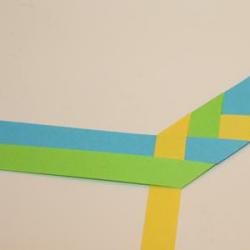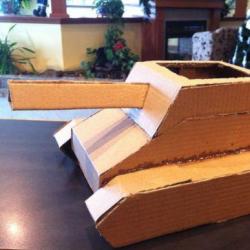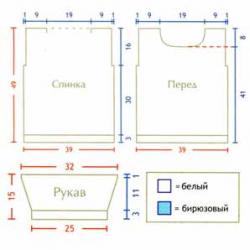Original postcard “Corset. Fashionable scrapbooking. Corsets and lacing Postcard corset
The corset has been the king of women's wardrobes for several centuries. He was toppled from his pedestal into oblivion, but he returned again and again in triumph...
The ancient prototype of the corset served the representatives of the second millennium BC, as evidenced by statues and frescoes found during excavations in Crete and Mycenae. Even Greek women wore leather belts under their chiton and tunic to tighten their bellies and wide “le sester” ribbons to support their breasts. The Romans improved this invention by providing it with lacing.
The corset appeared as a separate piece of clothing in the 14th century in Burgundy; its design emphasized the shape of the breasts.
In the middle of the 17th century, the Baroque style was replaced by the new Rococo style, which brought back the fashion for an open, high-lifted chest and a narrow waist. This period is the triumph of the waist-cinching corset. Catherine de Medici introduced a standard waist circumference at court - a little more than 33 centimeters. At that time, the corset was a privilege only for ladies from high social circles.
Corsets are sewn from satin, silk, satin, and richly decorated with lace, ribbons, and embroidery.
The wind of the French Revolution brought a new style of “empire” clothing, a desire for the ideals of antiquity, a high waist... it would seem that the corset was discarded, but it only changed again and after 1810 it returned to its pedestal for two whole centuries. Neglecting a corset was considered bad manners.
After 1820, industrial production of corsets appeared. It was an entire industry that employed a huge number of workers, including in the steel industry in the production of fittings.
What wonderful qualities was endowed with this intricate little thing, qualities that allowed it to be the main fetish of the fashion world for so long? The corset did not save from heat, not from cold, not from dampness... It saved from everyday life, it created an IMAGE. Mysterious female image!...
And this image smoothly transitioned into scrapbooking, turning the pages of wonderful craftswomen into tempting playful “canvases”. I'll show you some techniques for using lacing and using a corset as a decorative element for scrapbooking projects. Go!
1. Postcard in the form of a corset.
The well-known work of the Polish craftswoman has already amazed many lovers of scrapbooking and will conquer many more with its elegance of form and flirtatiousness! A gentle, romantic postcard reflects the image of a woman's corset and attracts with the unusualness of its shape and the delicacy of the palette.
2. Use of lacing and corset elements in work.
Using lacing in work is an excellent decorative technique for scrap pages. It helps fill space and add intimacy or playfulness, depending on the situation. A big fan of using lacing to decorate her pages is the amazing craftswoman Gabrielle Pollacco. Perhaps, no other craftswoman has ever seen such a variety of uses of different lacing methods.
Method one:
Using small lacing on paper tears at the edge of the backed page. Such lacing can be completed with bows or flowers, this will add completeness, or it can be left unadorned; this element can be completely self-sufficient. For such lacing, it is best to take thin satin ribbons, organza ribbons, waxed cord, embroidery or knitting threads and sisal thread. As they say, all methods are good, except for wide ribbons, since this element involves a small piece of lacing, then a wide ribbon will ruin all the ease of perception!




Method two:
Lacing together large rectangular elements. Such lacing can also become an original decorative technique on the page. It looks smooth and neat, due to the fact that the fastened elements do not have reliefs, irregularities or clearly defined torn and uneven edges. To emphasize neatness and lightness, it is better to use a waxed cord.



Method three:
Fastening uneven torn elements with lacing. This is a wonderful way to emphasize the pretentiousness of the page, its perkiness.


Also, in addition to fastening plain paper, you can use elements that are clearly associated with corset parts. For example, fastening openwork napkins with a satin ribbon or openly cut paper in an arc directly resembles the upper part of a corset.



Method four:
One of the most original and difficult ways is to lacing in a circle. This is difficult to do technically, but it looks great at work. A very rare appointment.

Method five:
And finally, I’ll show you the lacing running diagonally.

3. Steampunk style in scrapbooking and the use of a corset as a decorative element characteristic of this style.
Since this article is not about steampunk as a movement in art, but about the use of a corset as a decorative element in scrap works, I will talk about this style very briefly. Steampunk(English: steam-steam, punk-punk, or steampunk) is a genre of science fiction based on the technology of steam mechanisms. Steampunk is a fictional alternative world stylized as 19th century England. The attributes of this style combine clothing and household items of the 19th century and retro-futuristic elements.
If you want to know more about steampunk, follow the links at the bottom of the article.
This style is becoming more and more popular in design, fashion and art. Steampunk did not bypass scrapbooking, adding its own characteristic features to it in the form of:
- technologies based on the principles of mechanics and steam engines;
- electricity, telegraph, primitive arc lamps, experiments with electricity in the style of the works of Nikola Tesla;
- weapons from the time of the industrial revolution and variations on its theme;
- information technology of the Victorian era;
-clothing and accessories of Victorian England (including the corset that interests us)
The Graphic 45 company, having released the “Steampunk Debutante” paper collection and presented it in the summer of 2010, gave an excellent impetus to the development of the steampunk style in scrapbooking.
And, as we see, even on paper, many corsetry elements are used, which are repeated, interpreted and reproduced in different ways.
To create a postcard you will need:
- thick A4 paper for the base;
- the paper from which the corset is made (in my case it’s simple wallpaper, you’ll probably find something similar too);
- threads;
- eyelets 12 pcs;
- cotton lace 20cm;
- satin or organza ribbon 1m;
- glue Moment crystal or universal;
- glue gun;
- scissors, ruler, pencil.
In addition, you need to have a sewing machine to zigzag the edges and a grommet installer, although you can try without one.
Stage 1 – making a corset.
First, let's cut out the template. We take an unnecessary sheet of A4 paper, fold it in half and in half again, draw the required silhouette, cut it out, and the template is ready.





Transfer the template to paper and cut it out.


Then we bend it in half and cut off a 2-3mm strip (by eye), we get 2 parts.



Stage 2 – preparation for firmware.
Let's take some lace and ribbon and age it a little with coffee. The lace should be slightly moistened, then rubbed in your hand with coffee, then ironed.




Stage 3 – zigzag stitching.
First we outline the groove line. We mark 2 cm at the waist and, using the second part, draw a bend to the marked point, then draw a straight line.



We start stitching from the undercut, then you don’t have to interrupt the stitching until the end. Then we secure the threads on the back side using masking tape.

.

Then in the finished half of the corset we mark the points for the holes (every 3cm). We combine both parts and simultaneously make punctures in both halves and insert eyelets.



Stage 4 – connecting parts and decorating.
Take an A4 sheet of paper and fold it in half - this is the basis for the postcard.

We glue each part, aligning the protruding edges with the base. We coat with glue all sides except the one on which the eyelets are attached.

Cut out the base of the card according to the silhouette of the corset. The smooth edges can be decorated with a satin ribbon by gluing it to the “Moment”.


We pull the ribbon through the eyelets, tie a bow and secure it with a glue gun. Decorate with flowers to your liking.



Thank you for your attention. I hope you enjoyed it. If something is not clear, I'm waiting for your questions. Happy creativity.
PS You can ask for wallpaper samples at the appropriate store))) Or you can make do with scrap paper.
Every year I make an original card and give it to my friend, wishing her a happy birthday. This year I was able to surprise her with a very unusual card, which is shaped like a corset!
It turns out that the idea of such a postcard has existed for quite a long time and different masters perform it in different ways, but the main element in all cases remains the corset.
As you can see, each card is magnificent in its own way and will not leave any hero of the occasion indifferent! That is why I decided to make a card of this type and surprise my girlfriend with it.
To create the postcard I needed the following materials:
- colored thick paper or cardboard. You can use wallpaper
— eyelets 8 pcs.
- lace 20 cm long.
- organza or satin ribbon 1m
- scissors
- pencil
- universal glue or glue gun
- eyelet installer or you can try without it. For example, you can make holes with a hole punch.
Making a postcard:
— Cut out the template. To do this, take an old sheet of A4 paper and fold it in half. Then we fold it in half again, draw the desired silhouette and cut it out with scissors. Thus, the template is ready!
— We attach the template to beautiful paper and transfer the image. Cut out the corset shape.
— Decorate the top of the card with lace. To do this, glue the lace from the inside with glue.
— Mark with a pencil the installation locations of the eyelets. Let's take the grommet installer and attach the grommets to the card. You can make holes with a hole punch.
— Let's sign the card in its inner part. Close the corset, thread the ribbon through the holes and

- Postcard - the corset is ready!

In the form of a women's corset, you need to prepare the following materials and tools:
- – embossed paper, thick fabric with flowers or a piece of wallpaper will do;
- – satin ribbon for lacing the corset;
- – white cardboard;
- – scrapbooking paper;
- – small scissors;
- – glue "Moment";
- – dense plain fabric;
- – tools for installing eyelets and accessories for them;
- – nail polish of different colors, in this case pink, gold and silver;
- –lace braid.
2. Choose any corset template, print it, or draw it yourself. Cut it in half vertically, glue the template to the cardboard, cut it out, then glue the resulting cardboard template to thick fabric, then cut out the resulting two elements (photo No. 1).
3. Using a ruler, make markings for future lacing, set aside approximately 1 cm from the line of connection of the corset parts (photo No. 2).

4. Use nail scissors to make small holes for future eyelets (photo No. 3-4).


From the wrong side, cut off the excess paper resulting from the holes (photo No. 5).

You need to make 5 holes on each side (photo No. 6).

5. Take the grommet installation tool and install grommets in each hole (photo No. 7-8).


6. Use a ribbon to lace the corset so that the ribbon does not slip; make small knots on the ribbon at the beginning of lacing (photo No. 9-10). After this, cut off the knots and glue the ends of the ribbon to the wrong side of the card.

7. The next stage is creating the corset decoration. Take a piece of material with flowers (photo No. 11), cut out the flowers (photo No. 12).


To make the flowers sparkle on the product, you need to paint them a little with varnish. It is better to use the colors that are already on the corset. First you need to shade it with pink varnish, and then with gold, and a little silver on top (photo No. 14).
Paint the other floral elements silver and make the middle pink (photo No. 15). Glue the flowers to the corset.

8. To decorate the top of the corset, you need to take the braid and cut off the openwork edge, which is then glued to the front side so that it “peeks out” a little (photo No. 16-17).

9. Bend double-sided scrapbooking paper so that the future postcard opens from bottom to top. Glue the finished corset to this paper so that the top of the corset protrudes slightly above the fold (photo No. 18).

Cut a small textile element from the braid and glue it along a vertical line to hide the cut of the corset. Then cut out the card along the lines of the corset (photo No. 19).  This is what the inside of the card will look like.
This is what the inside of the card will look like.
10. The original postcard is ready.

Even more master classes in the section .
Did you like the product and want to order the same from the author? Write to us.
More interesting:
See also:
Postcard "Mitten"
Another work in the “Golden Hands” nomination from Olga Kiseleva from Iskitim. This is a wonderful New Year o...
To create a postcard you will need:
- thick A4 paper for the base;
- the paper from which the corset is made (in my case it’s simple wallpaper, you’ll probably find something similar too);
- threads;
- eyelets 12 pcs;
- cotton lace 20cm;
- satin or organza ribbon 1m;
- glue Moment crystal or universal;
- glue gun;
- scissors, ruler, pencil.
In addition, you need to have a sewing machine to zigzag the edges and a grommet installer, although you can try without one.
Stage 1 – making a corset.
First, let's cut out the template. We take an unnecessary sheet of A4 paper, fold it in half and in half again, draw the required silhouette, cut it out, and the template is ready.





Transfer the template to paper and cut it out.


Then we bend it in half and cut off a 2-3mm strip (by eye), we get 2 parts.



Stage 2 – preparation for firmware.
Let's take some lace and ribbon and age it a little with coffee. The lace should be slightly moistened, then rubbed in your hand with coffee, then ironed.




Stage 3 – zigzag stitching.
First we outline the groove line. We mark 2 cm at the waist and, using the second part, draw a bend to the marked point, then draw a straight line.



We start stitching from the undercut, then you don’t have to interrupt the stitching until the end. Then we secure the threads on the back side using masking tape.

.

Then in the finished half of the corset we mark the points for the holes (every 3cm). We combine both parts and simultaneously make punctures in both halves and insert eyelets.



Stage 4 – connecting parts and decorating.
Take an A4 sheet of paper and fold it in half - this is the basis for the postcard.

We glue each part, aligning the protruding edges with the base. We coat with glue all sides except the one on which the eyelets are attached.

Cut out the base of the card according to the silhouette of the corset. The smooth edges can be decorated with a satin ribbon by gluing it to the “Moment”.


We pull the ribbon through the eyelets, tie a bow and secure it with a glue gun. Decorate with flowers to your liking.



Thank you for your attention. I hope you enjoyed it. If something is not clear, I'm waiting for your questions. Happy creativity.
PS You can ask for wallpaper samples at the appropriate store))) Or you can make do with scrap paper.






